 |
|
|
plants text index | photo
index
|
| coastal plants | Cerbera in general |
| Yellow-eyed
pong pong tree Cerbera odollam Family Apocynaceae updated Jan 13 Where seen? This tree with pretty white star-shaped flowers and large round fruits is widely planted along our roadsides and in our parks. It is also sometimes seen growing wild in our mangroves, seashores and tidal rivers. According to Giesen, it is found in coastal forest and landward margins of mangroves and along rivers. It has a limited salt tolerance, and occurs on clays or sandy soils. Features: Tree up to 12-15m tall, but in Singapore usually shorter. Produces a white sap from all broken plant parks. Bark fissured, flaky, grey to brown with lenticels, often with buttress roots. Leaves oval (12-30cm long) dark green and glossy, held in dense spirals at the tips of the twigs. Leaves wither orange brown. Flowers (5-7cm) white with a yellowish centre, appearing at the tips of the twigs. Fruits globular or mango-shaped (5-7cm) glossy hard. Green ripening pink, rosy purple and finally black. Each fruit contains one poisonous seed. The fruits float and are dispersed by water. When they wash up, often only the fibrous husk is left, around a hard stone. It is the caterpillar host-plant of the King Crow butterfly (Euploea phaenareta castelnaui). Human uses: See the fact sheets on Cerbera species in general for more about their uses. Status and threats: This tree is listed as 'Vulnerable' on the Red List of threatened plants of Singapore. |
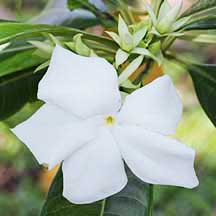 Changi, Apr 09 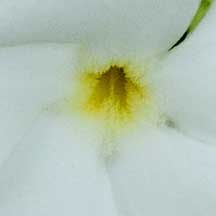 |
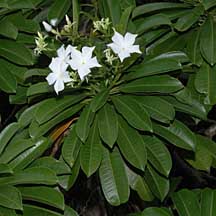 Pulau Semakau, Dec 08 |
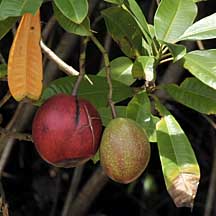 |
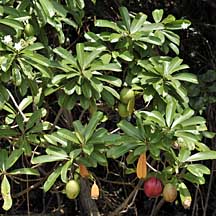 Pulau Semakau, Feb 09 |
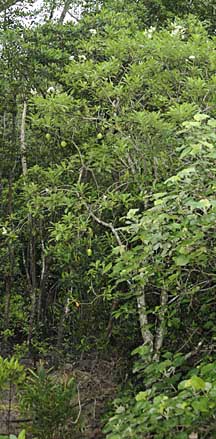 Pasir Ris Park, Sep 09 |
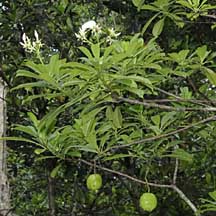 Pasir Ris Park, Sep 09 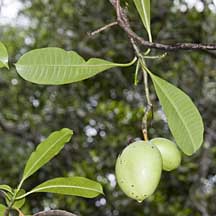 Pasir Ris Park, Mar 11 |
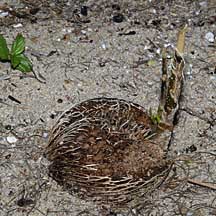 Gernimating fruit. Sisters Island, Aug 09 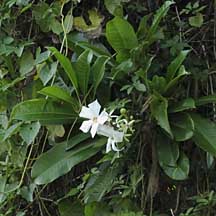 Sungei Pandan, Jun 09 |
Yellow-eyed
Pong pong trees on Singapore shores
| Photos for free download from wildsingapore flickr |
|
Links
References
|
|
|